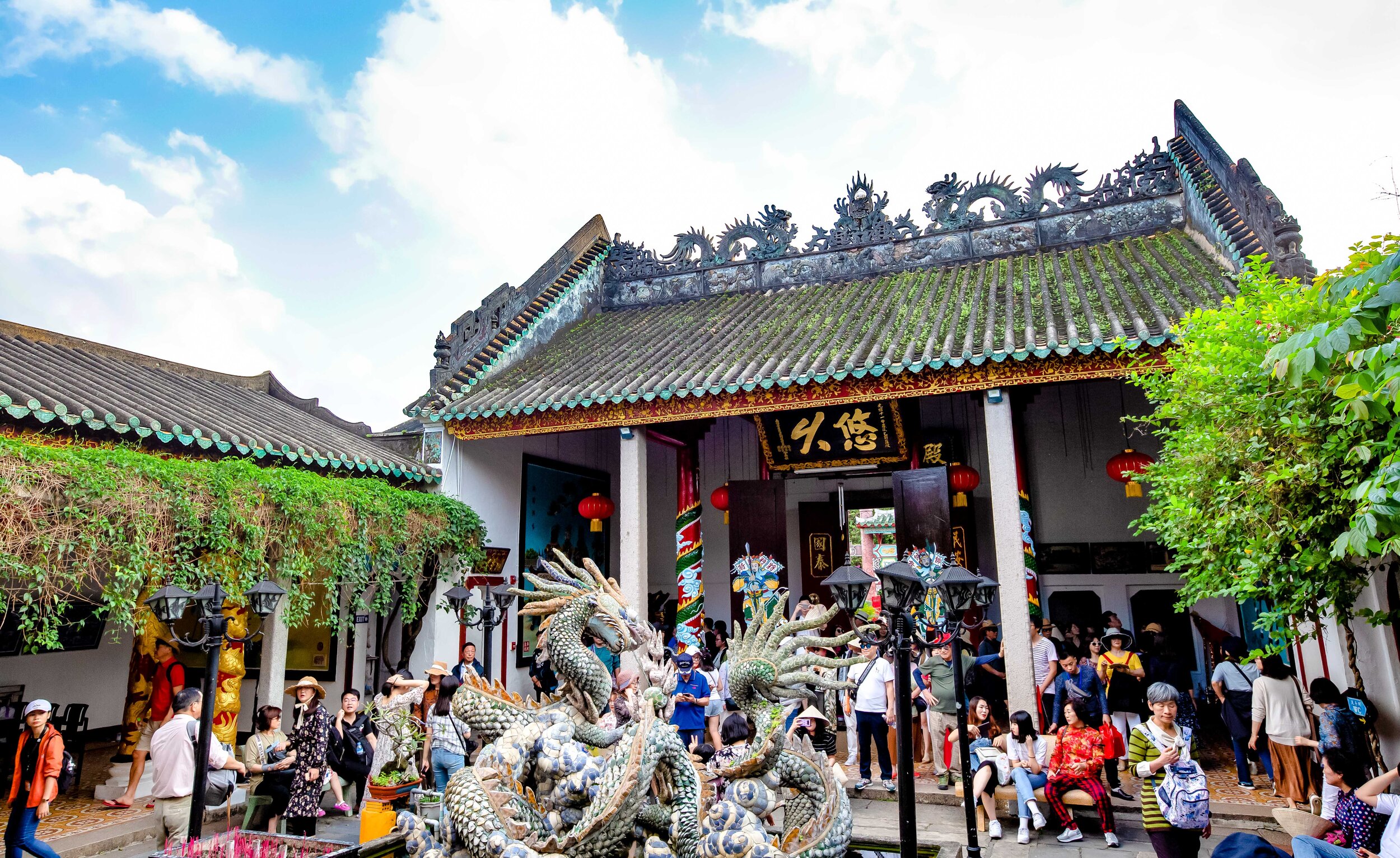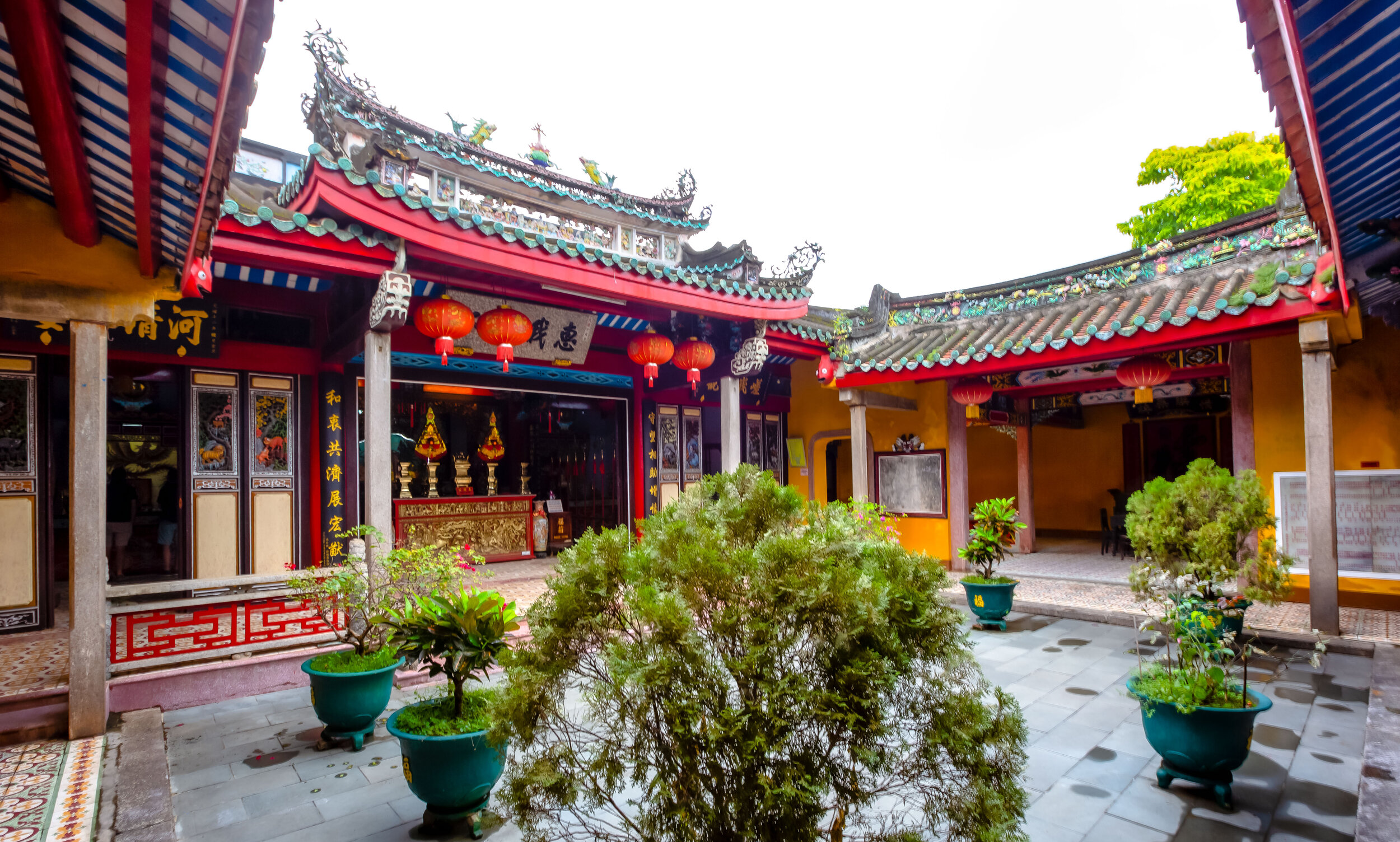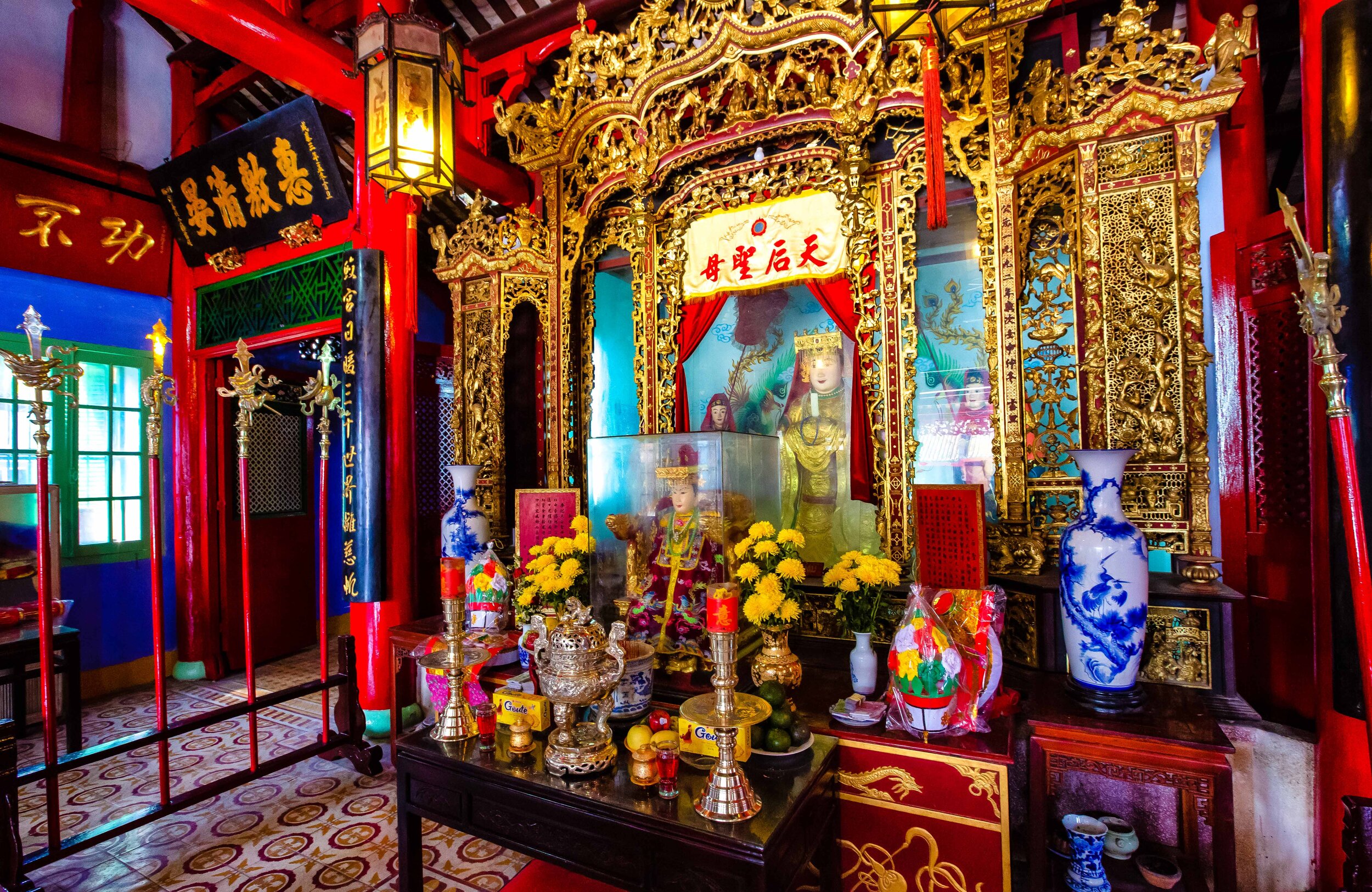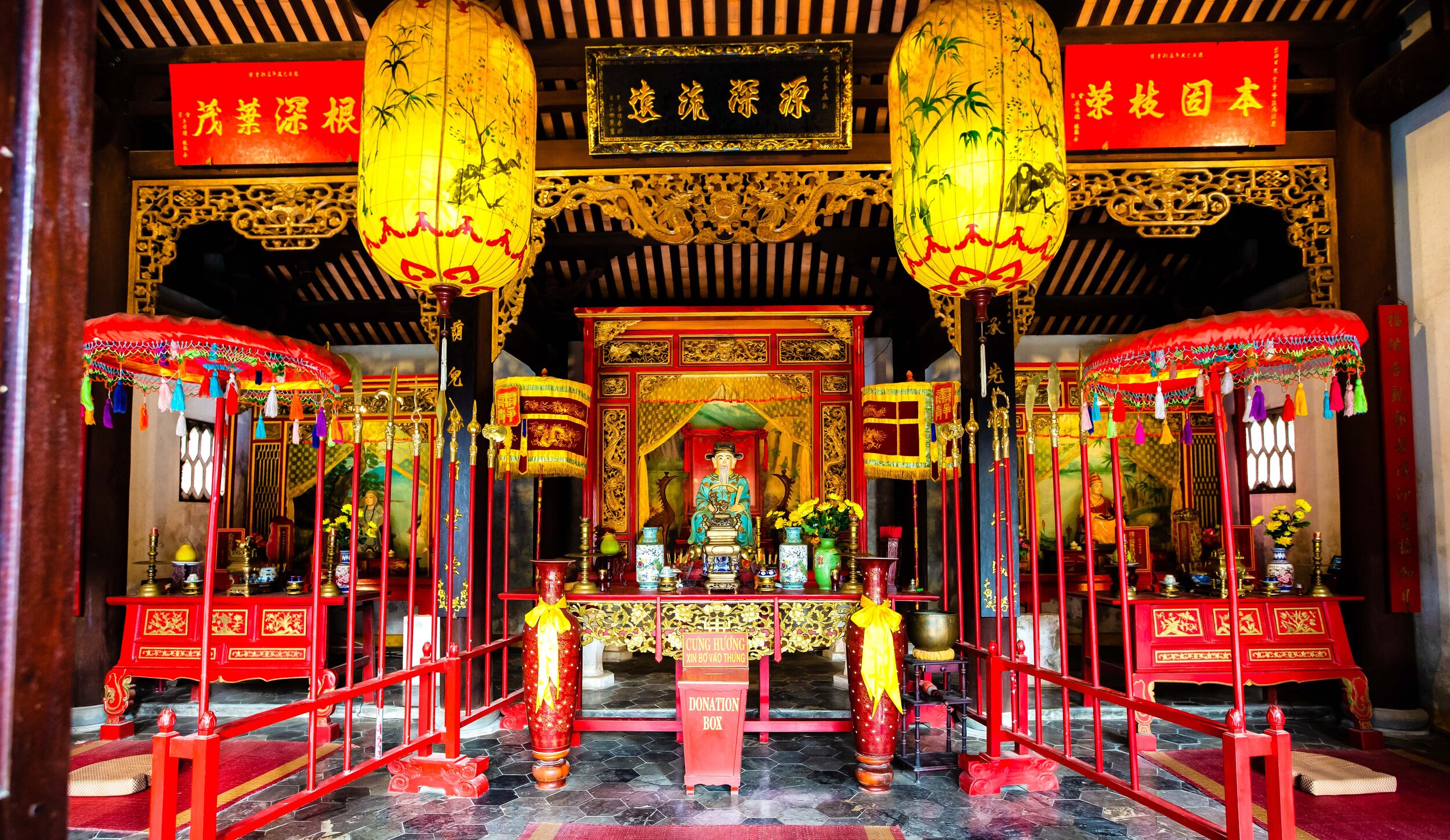Having lived in Taiwan for so long, when I travel to other countries in the region, I tend to carefully choose the locations that I visit. Most of the time the places I choose are those that are somewhat familiar or those that help to expand my knowledge about Taiwan and its history.
You may find it strange that I travel to other countries just to learn more about Taiwan, but the history of Asia is rather interconnected, so when I travel, its always possible to connect the dots with the things I’ve been learning here while learning about another country and its culture at the same time.
When I planned my trip to Okinawa for example, one of the destinations that was at the top of my list was the Naha Confucius Temple. Most visitors to the area probably have no idea that the temple even exists, but for me, it was an important stop that helped me learn more about the history of Chinese immigration to the islands and their relationship with Taiwan as well.
So, while planning an almost month-long vacation to central and northern Vietnam (with an additional stop in northern Thailand), I was eager to keep that tradition alive. I planned to check out some places that would help me learn more about the history of the region and in particular places that were related to or similar to what we so often see over here with the historic buildings in Taiwan.
The first stop on our trip was the famed UNESCO World Heritage recognized town of Hoi An in central Vietnam. This stop was probably the one that excited me the most as I’d not only to get to experience the history of this amazing port town, but also get to check out some of the famed “Assembly Halls” constructed by the Chinese immigrants, who moved there several centuries ago.
The thing about these halls is that while they serve a multitude of roles (which I’ll get into later) they also include shrines to Chinese folk-religion deities. So even though I’d be exploring central Vietnam, I’d also be visiting Taiwanese temple-like buildings that have been around for several centuries.
For most people, this might seem boring, but for me it was an adventure!
My next few blog posts are going to focus on the “Assembly Halls” of Hoi An, a subject that you won’t find too much information about online, but a topic that I believe is important to not only understanding the history of Hoi An with regard to Chinese immigration as well as the continued struggle of ethnic-Chinese people living there in maintaining their cultural identity.
First things first though - Let’s talk a little bit about Hoi An!
Hoi An (會安)
The port city of Hội An in central Vietnam was recognized as a UNESCO World Heritage Site in 1999 and in the two decades since has transformed from a quiet town into a bustling tourist destination and a hotspot for historical preservation.
Centuries before, Hoi An was one of the country’s most important ports of call and was a popular stomping ground for the Portuguese, Spanish, French, British, Dutch, Japanese, Indian and especially Chinese traders - many of whom stuck around and left their mark on the town.
Why was everyone coming to Hoi An you might ask?
Well, from the 15th to 18th centuries, the warehouses in the town were filled to the brim with highly-sought commodities such as high-grade silk, fabrics, paper, porcelain, Areca nuts, peppercorns, Chinese medicine, elephant tusks, beeswax, mother-of-pearl and lacquer.
For several hundred years business was so good that the foreign traders who visited on a seasonal basis each year eventually decided to make their presence permanent by constructing their own warehouses and leaving full time representatives in the area.
This is where the melting pot of nationalities started to have a lasting effect on the landscape of Hoi An, especially with regard to architecture.
Unfortunately, as the saying goes, nothing lasts forever.
When the Tây Sơn peasant rebellion overthrew the Nguyễn Dynasty in the eighteenth century, Hoi An was targeted by the rebels (as it was perceived as a major source of economic power for the ruling elite) and the city was torched and for the most part left to rot.
Despite Hoi An’s importance to the international community, the political situation in Vietnam became deplorable for most of the local people who reaped little benefit from the economic might of the city. The Tay Son gained broad support from peasants, ethnic minorities, merchants townspeople who were attracted to a message of seizing land from the wealthy and redistributing it to the poor with equal rights, justice and liberty.
Even though the Tay Son were able to rally the poor and had some military success, their reign over Vietnam was short lived as the French and the remnants of the Nguyen family cooperated to restore the Nguyen Dynasty to power under the leadership of Emperor Gia Long with the country united under a single authority for the first time.
By the turn of the nineteenth century, Hoi An started to come back to life and was transformed into the historic town that we see today. Unfortunately by that time, the Thu Bồn River had already silted up making the port inaccessible to larger boats which sent the majority of international trade to nearby Đà Nẵng (峴港).
With Hoi An’s declining importance as an international port of trade, it later became an administrative centre for the French Colonialists and then eventually a forgotten backwater that was amazingly left untouched by the changes (and devastation) that took place around the rest of the country.
The Hoi An of today features a harmonious blend of Japanese, Chinese and French Colonial architectural influences blended together with local Vietnamese design, making the town quite unique and worthy of its designation as a UNESCO World Heritage Site.
While the rest of Vietnam tends to be hectic and noisy, Hoi An maintains its laid back ambience with its historic buildings, museums, cafes, restaurants and bars - Tourists who visit the beautiful town are able to relax and enjoy warm days that turn into lantern-lit nights where you can explore while enjoying the classics of Bach, Mozart and Chopin through the street speakers.
“Hoi An”, which means ‘peaceful meeting place’ in Chinese certainly lives up to its name.
For more in-depth information about the area, I highly recommend checking out Hidden Hoi An, which is one of the best resources you’ll find online about traveling to the city, its destinations and pretty much anything else you’d like to know.
Chinese Assembly Halls (華人會館)
To explain what Assembly Halls are, let me start by first making a completely unrelated personal comparison:
I’m a Scottish-Canadian.
My family is part of the “Scottish diaspora” which consists of Scottish people and their descendants, who have spread throughout the world over the past few centuries. The actual number of people in the diaspora is hard to calculate, but it is estimated that there are around 28 - 40 million of us.
Why is this significant?
Well, in comparison, the Chinese diaspora consists of well over 50 million people and is the largest overseas ethnic group in the world.
When we talk about “Overseas Chinese” (海外華人) though, the term is often over-simplified and misunderstood as somewhat of a homogenous ethnic group, which is actually very far from the truth.
Although it can be argued that the majority of the diaspora are Han Chinese (漢人), it is important to note that the China of today is a country that consists of more than fifty different ethnic groups.
So when we use the broad term “Overseas Chinese”, what we’re actually doing is painting all of these people with the same brush and disregarding their very unique cultures, languages, cuisines, etc.
Within the diaspora, the largest groups within the “Chinese” community are those that hail from Southern China and are either Cantonese (廣東人), Hoochew (福建人), Hokkien (閩南人), Hakka (客家人) or Teochew (潮州人).
Having spread to almost every country in the world, you’ll easily find a community of tight-knit ‘Overseas Chinese’ almost anywhere you visit. In the west we’re familiar with our “China Towns” where that are home to large communities of ethnic Chinese citizens but the size of those communities often pales in comparison to those in South East Asia, where there has been a long history of exploration, migration and trade.
There is of course a laundry list of both positive and negative reasons why the people of China have migrated away from their homeland over the past few centuries, but for the purpose of this blog, I’m not going to delve too deeply into that.
Link: Overseas Chinese (Wiki)
In South East Asia, Overseas Chinese currently make up around 10% of the total population - The vast majority of these immigrants though have been living in their respective homes for several generations and have already assimilated into the local cultures. So much so that you might find it hard to differentiate them.
That being said, one of the things that has allowed Overseas Chinese communities to thrive wherever they went has been the strong sense of ‘community’ and the importance placed on maintaining cultural traditions.
One of the ways they have been able to successfully maintain their cultural traditions over the centuries has been thanks to the formation of tight-knit communities as well as through the construction of ‘social clubs’ or ‘partnerships’ where people of a common ancestry are brought together to network with each other as well as overcome economic difficulty, social ostracism and oppression.
What does this all mean? To put it simply, it means that if you were Cantonese and you showed up in Malaysia, one of the first things that you would do is search out the local community of Cantonese people and make friends with them, which would make your life in your new home much easier.
How would one go about doing this?
Well, your best bet would be to find the local ‘Cantonese Assembly Hall’.
Overseas Chinese Assembly Halls go by a bunch of different names in both Chinese and English, so finding information about them on the internet isn’t an easy task.
Finding one however isn’t all that difficult as they have been constructed all over the world.
Assembly Halls are essentially buildings that were constructed for people of a particular ethnic origin to have a safe space to gather with each other. While inside you could easily conduct the social, spiritual and commercial business of the day as well as helping to keep the traditions of their homeland alive.
While it isn’t always the case in western countries, in South East Asia, these Assembly Halls are most often historic buildings and are typically designed with traditional Chinese architecture. They do however tend to vary in their design (and decoration) based on the location they are constructed in as well as the culture that they represent.
What will you find inside an Assembly Hall?
A space for spiritual reflection.
A space for ancestral worship.
A space for holding meetings or events.
In Vietnam, people of Chinese origin are known as the “Hoa People” (越南華人) and currently number almost one million - making up almost one percent of the total population.
The shared history between China and Vietnam is something that goes back thousands of years - So, if you’re in the country you’ll be able find Assembly Halls from Hanoi to Ho Chi Minh City.
Link: The Chinese Temples and Guildhalls of Cholon (Spectral Codex)
In the UNESCO World Heritage town of Hoi An though, you’ll find several of these historic buildings and almost all of them have become popular tourist attractions.
Within the historic port town you’ll find a Cantonese Assembly Hall (廣筆會館), Fujian Assembly Hall (福建會館), Chaozhou Assembly Hall (潮州會館), Hainan Assembly Hall (海南會館) and Chinese Assembly Hall (中華會館) - Each of which has actively served the spiritual and cultural needs of the Overseas Chinese community for the past couple of centuries.
While these historic Assembly Halls have played important roles throughout history for the ethnic group they were constructed for, the situation today is a bit more liberal and a lot less factionalized.
It goes without saying that each of the respective overseas Chinese communities have been in their respective homes for several generations and their communities are well-established. So even though the halls continue to maintain traditional practices and offer a place for spiritual worship, they have also become important tourist destinations offering a glimpse into the interesting history that these immigrants have played in the region for the past few centuries.
As I mentioned above, I will be posting several articles with regard to these Assembly Halls, so as I them, this article will continue to serve as an introduction that I will update with links to the respective hall.
Below I’ll provide a brief introduction to each of the Assembly Halls in Hoi An as well as provide a map to all of the important tourist destinations in the city.
Before I move on though, I’d like to give Mr. Chiang Wei-wen (蔣為文) of Taiwan’s Academia Sinica (中央研究所) a shout out for his thesis titled: “ 越南會安古城當代明鄉人、華人及越南人之 互動關係與文化接觸“ which has been one of the most amazing resources for all of the research I’ve done for this article and the others that will follow. As I also mentioned earlier, information about these Assembly Halls is hit and miss, so I can’t thank him enough for the amazing research that he’s done.
The Quang Trieu Assembly Hall is one of Hoi An’s most popular tourist destinations - located a short distance from the waterfront and the Japanese-Covered Bridge, it is almost always jam-packed with travelers enjoying the beautiful open-courtyards and temple.
The Assembly Hall is dedicated to the Cantonese immigrants who came to Hoi An from the Guangdong (廣東) region of China. Constructed in 1885, the large Assembly Hall has a temple dedicated to Quan Cong (關公), the Chinese God of War (and so many other things). .
One of the highlights of a visit to the Cantonese Assembly Hall is a stop at the traditional garden to the rear of the hall where you’ll find a beautifully designed dragon fountain surrounded by a bit of nature.
Address: 176 Trần Phú, Phường Minh An, Hội An, Quảng Nam, Vietnam
The Phuc Kien Assembly Hall is the largest of all of Hoi An’s Assembly Halls - It might also be the most beautiful of the bunch. One of Hoi An’s most popular tourist destinations, the 250 year old Assembly Hall and place of worship has been an important meeting place for the Hokkien (閩南) people, who immigrated to the area from Fujian Province in China.
The interior is home to a temple known as the “Heavenly Goddess Temple” (天后宮), dedicated to the Goddess of the Sea “Thien Hau” (天后). It has also become a popular stop for local Vietnamese people looking for a blessing from the Goddess of Fertility.
Address: 46 Trần Phú, Cẩm Châu, Hội An, Quảng Nam, Vietnam
The Triều Châu Assembly Hall, constructed in 1887 is dedicated to the Teochew people who hail from the Chaozhou (潮州) region of China’s Guangdong Province.
The Assembly Hall is located near the popular Hoi An Market, but is a short distance away from the main pedestrian stretch making it considerably more quiet than some of the other Assembly Halls in town.
The great thing about the relative quiet you get while visiting though is that you are easily able to enjoy all the small details within without being disturbed. Those details are quite important considering that the Teochew people are renowned throughout China for their woodworking skills, which are expertly put on display within this Assembly Hall.
Address: 345 Nguyễn Duy Hiệu, Cẩm Châu, Hội An, Quảng Nam, Vietnam
The Hải Nam Assembly Hall, constructed in 1875 is dedicated to the immigrants from China’s Hainan Province (海南), an island south of the Chinese mainland.
Situated along the pedestrian stretch of historic Hoi An, the Hainan Assembly Hall is a bit different than the others in town - its place of worship is dedicated to an unfortunate historic event that took place.
The temple honors 108 Chinese traders who were mistaken for pirates while traveling to Hoi An for business and were brutally massacred. Later, when the Vietnamese Emperor Tu Duc discovered what happened, he provided funds to the Hainanese people in the area to construct the Assembly Hall and deified the sailors as martyrs, hoping to make amends.
Like all of the Assembly Halls in Hoi An, this one was constructed with traditional Chinese architecture but it is also quite simple in terms of its decoration.
Address: 10 Trần Phú, Cẩm Châu, Hội An, Quảng Nam, Vietnam
The Trung Hoa Assembly Hall, or the “All-Chinese Assembly Hall” is a bit different than the other halls in town.
The previous few Assembly Halls were all dedicated to specific ethnic groups while this one was constructed to help out anyone of Chinese descent living in Hoi An.
As one of the oldest Assembly Halls in the city, it was constructed with funds contributed by people from all over Southern China including Fujian, Chaozhou, Guangdong and Hainan.
It not only helped to serve as a place for immigrants to get together to network and do business with each other but also to bridge the divide between the different ethnic groups, which historically have been at odds with each other.
Like the Fujian Assembly Hall, the main shrine is dedicated to the Goddess Thien Hau, but you’ll also find shrines to Sun Yat Sen (孫中山), the founder of the Republic of China (中華民國) and one of the most important figures in modern Chinese history.
You’ll also find a shrine dedicated to the soldiers who died during the anti-Japanese resistance as well as another dedicated to Confucius (孔子).
For much of its history, the Assembly Hall was home to a Chinese Public School which provided an educational space for those who didn’t have an Assembly Hall of their own. Today that school is home to a language-learning centre where people can go to learn the language, culture and tradition of their ancestors.
It’s also a pretty popular tourist attraction within Hoi An and is well worth a visit as the architectural design is beautiful.
Address: 64 Trần Phú, Phường Minh An, Hội An, Quảng Nam, Vietnam
Minh Huong Communal House (明鄉萃先堂)
Is this one actually an Assembly Hall? Is it Chinese?
There’s certainly a bit of debate on this subject, but I’m going to go ahead and include it on my list anyway.
If you’re willing to place the Minh Huong Communal Hall in the same category as all the other Assembly Halls in Hoi An, then it is the most historic of all of them.
You’d think that such a historic building would be a major tourist destination, but unfortunately it doesn’t really seem like the people in charge know how to sell it to the outside world, which is a shame.
The Minh Huong Communal Hall is the “Assembly Hall” constructed by and dedicated to the “Minh Huong” (明鄉) people, an interesting group of Chinese immigrants/refugees, who were one of the first waves of Chinese immigrants to make their home in Hoi An and start doing business there.
Today the Minh Huong are considered to be Vietnamese and even though their ancestors hailed from China, they maintain quite a few of the cultural and religious traditions that their ancestors brought with them from China and their Communal Hall is an interesting place to visit if you want to learn about their complicated and fascinating history.
Address: 14 Trần Phú, Cẩm Châu, Hội An, Quảng Nam, Vietnam
Getting to Hoi An
Hoi An is a coastal town in Vietnam’s central Quang Nam province that is a 30km drive southeast of neighbouring Da Nang City. Since Hoi An has become such a popular destination for travelers, getting to the historic town from Da Nang is quite convenient.
Whether you arrive by air through Da Nang International Airport, by train through Da Nang Station or by coach, you’ll be able to easily get yourself to Hoi An through public or private transport, all of which are quite affordable.
While staying in Vietnam, you should also download the “Grab” app for your phone so that you can easily grab a taxi during your travels without having to worry about getting cheated.
Link: Transportation Guide: How to Get from Da Nang to Hoi An
Once you’ve arrived in Hoi An, getting around is really easy - just walk everywhere!
The ‘Old Town’ area of Hoi An that has become a UNESCO World Heritage Site isn’t all that big, and due to so much pedestrian traffic, they’ve blocked the area off from cars, so unless you’re riding a bicycle or a scooter, the best way to get around is on foot.
When you’re ready to start exploring you’ll find that the majority of historic properties, temples, museums and restaurants are located on or between the riverside and Tran Phu Street.
What you’ll want to keep in mind though is that exploring the historic properties of Old Town isn’t free, so you’re going to have to purchase an entrance ticket as one of the tourist information centers.
The entrance tickets are 120,000 VND (5 USD) per person and give you access to five sightseeing destinations. The tickets are valid for the duration of your stay, so if you don’t use all of the tickets on your first day, you’ll still be able to use what you have remaining on the next day.
With so many places to visit within the Old Town though, five tickets might not be enough, so you might have to purchase a second set of tickets if you want to fully experience the town.
Link: Hoi An Old Town Ticket, Entrance Fees & Sites (Hidden Hoi An)
The map below lists each of the Assembly Halls as well as a few other places of interest that you’ll want to visit if you find yourself in the area.
There are quite a few interesting destinations to stop and visit within the historic city of Hoi An - If you’re asking me though, the most interesting of all of them are the Chinese Assembly Halls.
You might be thinking: Why would I visit Vietnam to check out Chinese stuff?
Well, if you’re visiting Vietnam, there are lots of places to visit where you can easily enjoy Vietnamese culture, cuisine and architecture.
Hoi An however is a village that made its riches from foreign traders and the Chinese immigrants that made their home there have had a lasting impact on not only the small city, but the country as a whole.
If you’re visiting Hoi An, you’ll definitely want to visit some of the historic traders houses, but trust me, these Assembly Halls are much more interesting and you’ll definitely enjoy yourself when you visit!











































